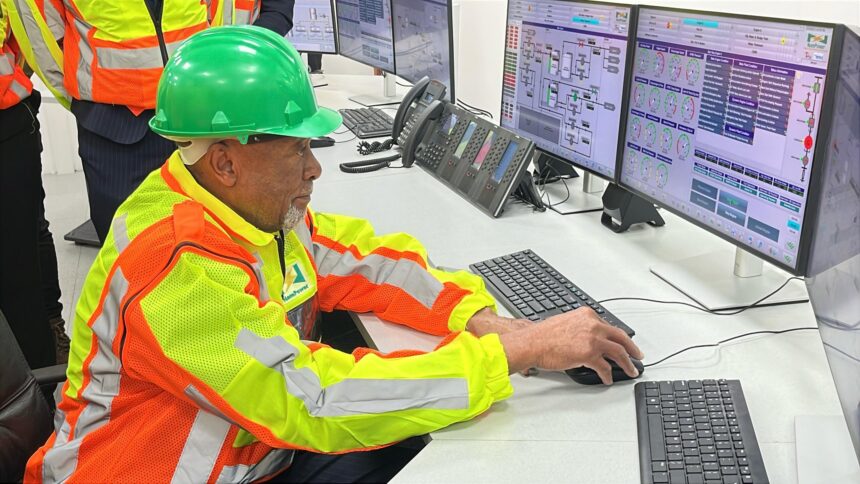WALVIS BAY – Namibia has reached a significant milestone in advancing its power generation capacity.
President Nangolo Mbumbo on Wednesday inaugurated Nampower’s long-awaited Anixas II Power Station in Walvis Bay. The 54MW dual-fuel power station is designed to enhance the country’s electricity security.
It can run on natural gas. Speaking at the official inauguration, Mbumba applauded NamPower for its efforts in securing Namibia’s energy future.
“Energy is the foundation of modern economies. Without a stable, secure and affordable energy supply, no country can hope to achieve sustained economic development,” he said.
He noted that “a well-balanced electricity sector must prioritise affordability alongside self-reliance. He encouraged the electricity sector to explore all avenues from cost-effective renewable energy deployment to strategic imports, and ensure that the Namibian people and industries have access to reliable and affordable electricity.
“This power station represents a crucial step forward – not only in strengthening our energy infrastructure but in
securing a stable foundation for Namibia’s future growth,” he said. The station, which complements the existing 22.5MW Anixas Power Station, will provide firm, dispatchable and reliable power to the national grid. Its construction, completed for N$1.252 billion, is part of NamPower’s broader strategy to diversify the country’s energy mix and reduce reliance on electricity imports.
NamPower’s managing director Simson Haulofu stressed the importance of the new power station in strengthening the country’s energy security.
“This power station will play a crucial role in meeting Namibia’s peak electricity demand. It will contribute to the country’s goal of achieving 900MW of installed capacity by 2030,” he noted.
Anixas II will not only stabilise the grid but also provide much-needed flexibility to integrate more renewable energy projects in the future.
Haulofu noted that the power station is part of NamPower’s Integrated Strategic Business Plan, which was adopted in 2020 to ensure the security of power supply through a diversified energy mix.
Namibia currently imports between 40% and 70% of its electricity from neighbouring countries, depending on fluctuating demand and supply conditions.
However, these nations face their energy constraints, hence the need for self-reliance has become increasingly urgent. “While regional cooperation is essential, we cannot depend indefinitely on imported power. Anixas II is a step towards reducing this dependence and positioning Namibia as a potential exporter of electricity in the future,” he said.
In addition to Anixas II, NamPower has been implementing various renewable energy projects, including the 20MW Omburu Solar PV Plant, the 100MW Rosh Pinah PV Power Project, the 40MW Tsumeb Biomass Power Project and a 54MW Battery Energy Storage System at Omburu.
The company is also working on wind and other clean energy initiatives to ensure long-term sustainability.


